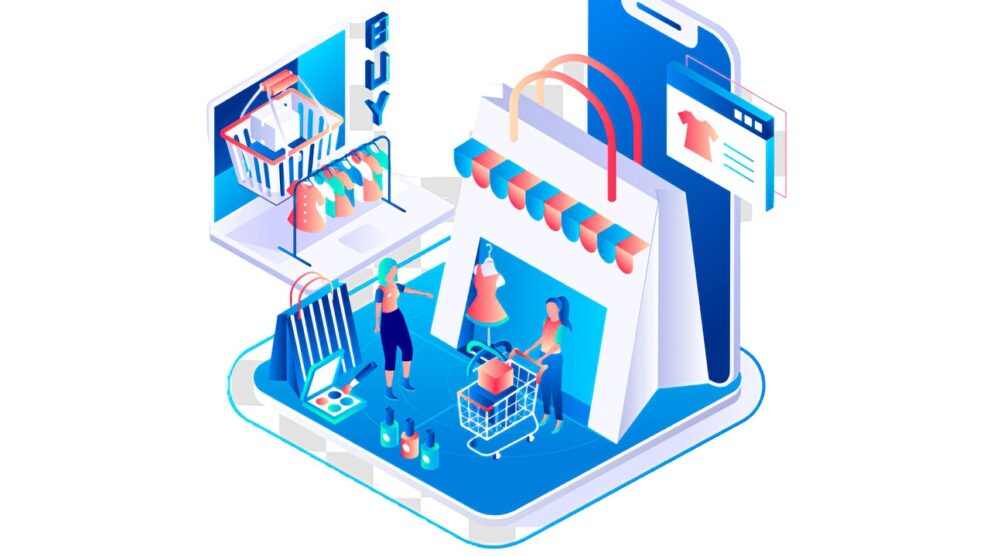You know the feeling when you are in a store and see an amazing, exciting, perfect thing that you instantly know you just have to have? Whether it’s the perfect pair of shoes, a golf club that will change your stroke, or a new ice cream flavor you must try, you get that instant rush and snag the product off the shelf—or out of the freezer. That rush is what made malls the epicenter of American shopping for decades. But these days, people are turning to eCommerce rather than visiting physical retailers.
As eCommerce grew and matured, most retailers focused around the frictionless path to purchase: pushing a user from website visit to purchase quickly and easily. But the thrill of encountering something unexpected and perfect still exists. It’s called discovery shopping, and it’s driving the most exciting developments in ecommerce.
Most online shopping is aimed at customers who already know what they want. If a shopper wants to buy sheets, they can choose from a traditional retailer like Macy’s or a modern one like Brooklinen, but wherever they choose to shop, the biggest purchasing decision (what they want) is made before they even get to the website. But a significant portion of physical shopping doesn’t work like that at all.
From catalogs to malls to just wandering through Target to find a fun treat while you’re picking up necessities, many of the most enjoyable retail experiences are about discovery. Discovery shopping’s power is evidenced by stores like T.J. Maxx and Marshall’s— stores built entirely around this style of retail. At these stores, shoppers know they can get a good deal, but more powerfully, shoppers get the feeling of being on a treasure hunt.
The Treasure Hunt
That excitement of the treasure hunt is what discovery shopping is all about. But, if discovery shopping is so powerful, why have retailers struggled to harness its power online? You’ve probably never shopped at T.J. Maxx’s website, and neither have most of its loyal customers.
For a long time, discovery retailers were not facing the woes of other brick- and mortar retailers and their treasure hunting format is tactile, spontaneous, and even a little messy—an experience they couldn’t successfully reproduce online. But, it’s not about reproducing but rather recreating the treasure hunt to work online and on mobile.
Embrace the Power of Browsing
If you want to incorporate discovery shopping into your eCommerce experience, you have to embrace the idea that browsing is almost as important as checking out. It’s no surprise that’s a challenge for an industry that has an efficient customer funnel down to a science.
In many ways, retailers need to think like social media companies. How do they hold their users’ attention day after day? How do they keep them coming back? How do they turn endless scrolling into sales? Discovery marketplace Tophatter uses its single feed to keep shoppers engaged in the online treasure hunt, and it’s unique and surprising auction format keeps them coming back for more.
On the other side of the discovery spectrum, a brand like VIDA partners with artists and designers around the world to create an ever-evolving collection of beautiful things to browse. They organize their designs under fun, infinitely browsable categories like “It’s 5 O’Clock Somewhere” and “Bathed in Blue” that you can explore. These experiences are built around browsing, not searching.
Elements that power discovery shopping can be added to any shopping experience to grow sales and retain customers longer. Here are three easy tips to inject discovery into your retail experience:
Focus on engagement, not just conversion
Fun is key! Discovery shopping is about being leisurely, not pushing a customer to purchase. Think beyond the search bar and build experiences that let shoppers explore and be surprised. This could take the form of personalization, content marketing, gamification elements, or even just be baked into the site design and UX. Focus on time on site and return visits as key metrics. You’re building loyalty through engagement.
Meet customers on mobile (and everywhere else)
You never know when a customer will be in the mood to explore. They might pop into your website or app during lunch to browse or they might fire up your app while they’re in line at the post office. You can’t think of mobile as a secondary experience to web because the browsing bug doesn’t wait until a shopper is at home in front of their computer. Utilize omnichannel marketing strategies to stay top of mind through push notifications, emails, and social media so you’re always reminding your shoppers that they could be having a good time discovering with you. And ensure your listings are just as compelling and easy to navigate on mobile as they are on web.
Think of your inventory as a living thing
Staleness is the enemy of discovery. Every time a discovery shopper visits, they expect a fresh shopping adventure, and they always want to be surprised. No amount of engaging content or in-app gamification will keep shoppers coming back if the products you sell don’t make that treasure hunt feeling happen. Showcasing your inventory through personalization, creative marketing campaigns, and discovery-driven tools is your strongest weapon. Even if you’re not ready to abandon the search bar for a pure discovery shopping, you can still build an ecommerce experience that invites your customers to get lost and find the next thing they didn’t even know they wanted until they saw it.





